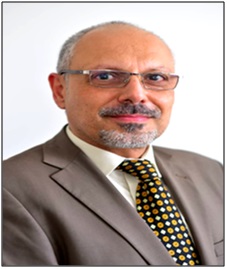EFFECT OF REMOVABLE DENTURES ON COLONIZATION OF AEROBIC BACTERIA IN THE ORAL CAVITY AND ANTIBIOTIC PATTERN OF THE COMMON ISOLATED BACTERIA
Keywords:
Antibiotic susceptibility testing, micro flora of the mouth, normal teeth, oral cavity, removable dental prosthesisAbstract
Background and aims: Wearing a removable dental prosthesis causes a change in the micro flora of the mouth. The aim of this research was to verify the composition of aerobic bacterial in the oral cavity of patients with removable dentures and with normal teeth (without dentures), and antibiotics pattern for common isolates.
Methods: Bacteriological investigations were performed in 122 individuals (61 removable dentures: 61 normal teeth) attending dental clinics of Faculty of dentistry, Sana’a University, Yemen and private dental clinics. The culturing and antibiotic sensitivity were conducted in the Microbiology Department of the National Center of Public Health Laboratories (NCPHL) Sana'a, Yemen. Tongue dorsa and palate mucosa swabs were collected from normal teeth and denture groups, and as well swabs from mucosal part of denture surfaces in prosthetic patients. Cultivation in microaerophilic (5% CO2) and oxygenic conditions were performed on solid selective and non-selective media in addition to media enriched with 5% blood.
Results: Regarding the prosthetic patients, the rate of bacterial isolates from the palate, back, tongue and dental plaque smears was higher potential pathogenic bacteria as S. aureus and Enterobacteriaceae spp in denture wearers, as E. coli (6.6% in dentures vs. 1.6% in the absence of dentures), Klebsiella pneumoniae (11.4% in dentures versus 1.6% in the normal teeth) and Pseudomonas aeruginosa (13.1% versus 0.0% ).While in viridians Streptococcus including Strept .mutans, there was a lower colonization rate in denture patients (18% in palate verses, 73.8% in individuals without dentures).
Conclusion: The study demonstrated an elevated rate of bacterial isolates from palate, back, tongue and plaque swabs in denture patients of pathogenic bacteria such as S. aureus, E. coli, Klebsiella pneumoniae, and Pseudomonas aeruginosa; while in Streptococcus viridians including S. mutans, there was a lower colonization rate in denture patients verses a very high rate in individuals without dentures.

Peer Review History:
Received: 4 October 2022; Revised: 13 November; Accepted: 28 December 2022, Available online: 15 January 2023
Academic Editor: Ahmad Najib , Universitas Muslim Indonesia, Indonesia, ahmad.najib@umi.ac.id
, Universitas Muslim Indonesia, Indonesia, ahmad.najib@umi.ac.id
Reviewers:
 Dr. Alfonso Alexander Aguileral, University of Veracruz, Mexico, aalexander_2000@yahoo.com
Dr. Alfonso Alexander Aguileral, University of Veracruz, Mexico, aalexander_2000@yahoo.com
 Dr. A.A. Mgbahurike, University of Port Harcourt, Nigeria, amaka_mgbahurike@yahoo.com
Dr. A.A. Mgbahurike, University of Port Harcourt, Nigeria, amaka_mgbahurike@yahoo.com
Downloads

Published
How to Cite
Issue
Section

This work is licensed under a Creative Commons Attribution-NonCommercial 4.0 International License.









 .
.